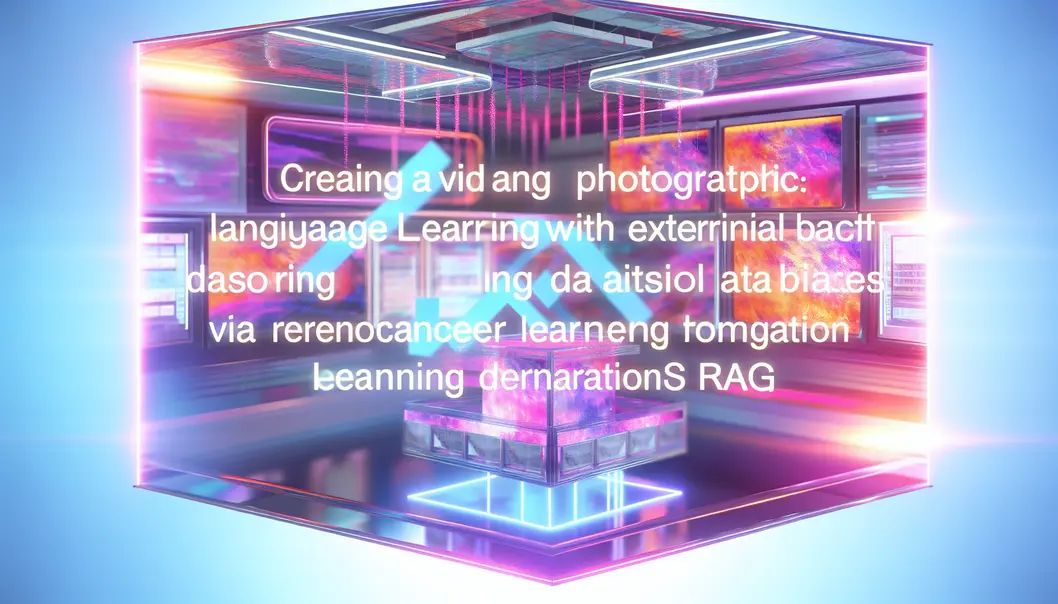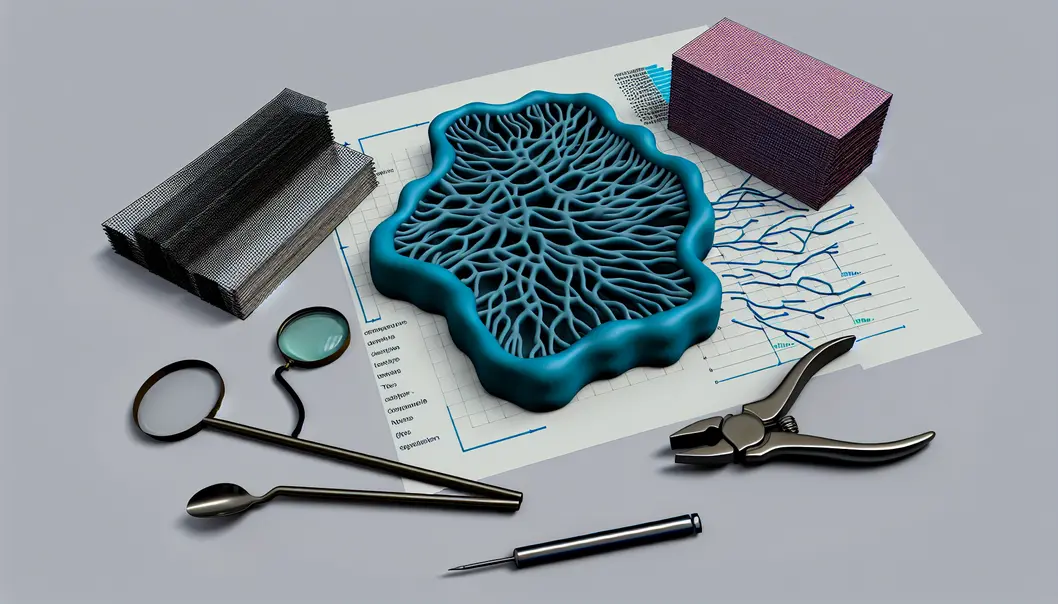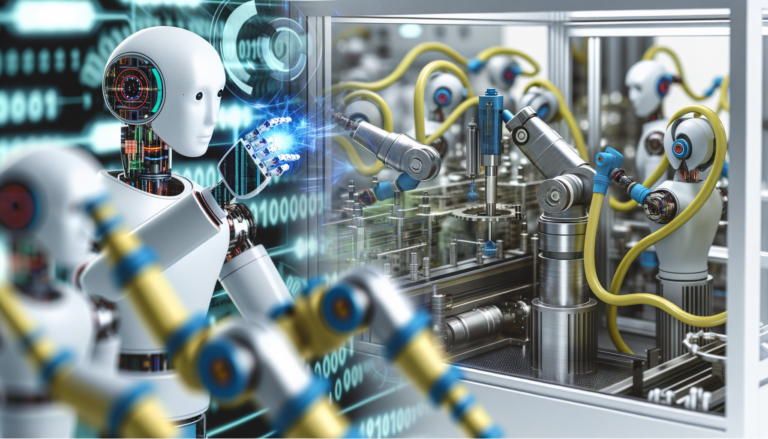Introduction
The development of large language models (LLMs) has revolutionized the capabilities of artificial intelligence, providing unprecedented potential for automation, information retrieval, and decision-making processes. Among the methodologies to optimize LLMs, Retrieval-Augmented Generation (RAG) and fine-tuning represent two prominent approaches, each presenting distinct advantages and challenges. This article explores the dynamic nature of RAG in enhancing LLM outputs with real-time information, alongside the deep, domain-specific customization offered by fine-tuning. The chapters delve into these techniques, offering insights into their applications, benefits, and the potential for integration, providing an expansive look at how developers can leverage these tools to maximize AI potential.
Contents of Table
Chapter 1: Exploring RAG and Fine Tuning Comparison: Mechanisms and Advantages
- The Agile Innovation of Retrieval-Augmented Generation
- Deep Dive into Fine-Tuning: A Fusion of Expertise and Precision
Chapter 2: Strategic Integration of RAG and Fine Tuning for Optimal Model Customization
- Unifying Methodologies: Navigating the Benefits of RAG and Fine Tuning
- Navigating Performance Metrics and Implementation for Optimal RAG and Fine-Tuning Integration
Exploring RAG and Fine Tuning Comparison: Mechanisms and Advantages

1. The Agile Innovation of Retrieval-Augmented Generation
Retrieval-Augmented Generation (RAG) represents a transformative advancement in AI, redefining how large language models (LLMs) generate responses by integrating external, real-time information. Unlike traditional models that rely solely on extensive pre-training datasets, RAG innovatively leverages contemporary search systems combined with language models. This synthesis allows RAG to tap into dynamically changing information landscapes, ensuring outputs that are not only accurate but contextually relevant to the latest data.
Through sophisticated mechanisms, RAG begins by converting queries into numerical representations via vector embeddings, facilitating efficient retrieval from vast data repositories. This process is akin to a researcher consulting an expansive library before crafting a precise response, thus enhancing the fidelity of the generated information. The retrieved data is then seamlessly weaved into the generative model’s outputs, providing a layered understanding that is both comprehensive and up-to-the-minute. This capability is indispensable in domains where knowledge rapidly evolves, such as medicine or finance.
Furthermore, RAG’s ability to adapt without extensive retraining significantly reduces operational costs, making it accessible for various applications. Enhanced by techniques like graph-based retrieval, RAG models can maintain high standards of relevance and precision. However, reliance on external data sources necessitates robust security protocols to mitigate associated risks. For a more detailed exploration of RAG’s innovative mechanisms, visit this insightful resource.
2. Deep Dive into Fine-Tuning: A Fusion of Expertise and Precision
Fine-tuning represents a meticulous approach to refining pre-trained language models to excel in domain-specific tasks, infusing them with specialized knowledge. This process is akin to fine arts—it modifies internal model parameters through exposure to specialized datasets, effectively molding the raw talent of a general model into an expert tailored for particular contexts.
Through parameter updates, fine-tuning allows for the embedding of domain knowledge directly into the model. This approach capitalizes on pre-trained models, enabling them to understand and generate responses with niche terminology and domain-specific syntax. While traditional fine-tuning is resource-intensive, requiring significant computational power, innovations in parameter-efficient techniques have drastically reduced these burdens, making this approach more accessible and efficient.
The advantages of fine-tuning are manifold. Its ability to enhance contextual accuracy makes it a preferred choice in scenarios where precision is paramount. By transforming a model into a specialized entity, fine-tuning leads to heightened specialization—models can become virtuosos in specific fields, providing responses that are not only accurate but enriched with subject matter expertise.
Complementing Retrieval-Augmented Generation (RAG), fine-tuning forms a harmonious balance between steadfast precision and dynamic information access, fostering AI systems that cater to both stability and adaptability. For more insights into integrating these methodologies, see Agent 2 Agent Protocols: AI Integration Made Easy.
Strategic Integration of RAG and Fine Tuning for Optimal Model Customization

1. Unifying Methodologies: Navigating the Benefits of RAG and Fine Tuning
Core Methodologies and Strategic Benefits of Unifying RAG and Fine Tuning
Incorporating AI models into organizational processes often leads one to consider two pivotal methodologies: Fine Tuning and Retrieval-Augmented Generation (RAG). Each offers unique advantages, tailored to specific needs, making them indispensable in varying scenarios. Understanding these methodologies’ core components and strategic benefits is essential to harness their full potential.
Fine Tuning provides a model with enriched domain-specific knowledge by retraining it on a custom dataset. It is exceptionally suited for tasks that demand high precision and consistency, such as applications where accuracy is paramount or where a distinct communication style is necessary. Particularly valuable for environments with limited data availability, Fine Tuning can deliver significant improvements with datasets often consisting of 100 examples or fewer.
By contrast, RAG introduces dynamism by enhancing models with relevant, real-time data sourced from external databases. This allows for up-to-date insights and seamless integration of domain-specific information. It shines in conditions requiring frequent updates and where models must stay current without the need for labor-intensive retraining. RAG’s ability to access live data makes it ideal for applications dependent on the latest information.
Strategically combining Fine Tuning and RAG facilitates a comprehensive approach that synergizes their complementary strengths. Fine Tuning secures precision in defined domains, while RAG ensures adaptability with real-time data integration. This harmony optimizes performance and resource efficiency. Enterprises can tailor their AI systems to meet diverse requirements by deploying Fine Tuning for intricate, static needs and RAG for dynamic, evolving scenarios. This approach not only enhances model efficacy but also aligns with the modern demand for balancing accuracy with adaptability—a key strategy detailed further in retrieval-augmented generation insights.
2. Navigating Performance Metrics and Implementation for Optimal RAG and Fine-Tuning Integration
In the quest for optimized AI model performance, understanding the nuanced performance metrics and implementation intricacies of integrating Retrieval-Augmented Generation (RAG) and fine-tuning is paramount. The blend of these methods requires careful evaluation of key performance aspects.
Accuracy and Response Quality emerge as critical metrics. Fine-tuning offers remarkable precision in specialized domains by updating model weights with domain-specific insights. Conversely, RAG enhances real-time response capabilities by tapping into external databases, making it invaluable for dynamic knowledge acquisition. Complementing the two approaches can significantly boost response quality, exemplified by Amazon Nova’s 83% improvement in response effectiveness.
Latency and Efficiency present a duality: while fine-tuning minimizes latency for swift task execution, RAG’s data retrieval might introduce delays. Balancing these factors ensures dynamic data handling without compromising speed.
Scalability and Cost considerations also play a pivotal role. Fine-tuning is resource-intensive, demanding substantial computational power, though it may yield long-term savings with efficient execution. RAG’s cost-effectiveness hinges on the infrastructure supporting its retrieval operations, emphasizing the importance of scalable architecture.
Successful integration involves strategic implementation: a high-quality knowledge base is crucial for RAG, while fine-tuning necessitates robust computational resources and pristine data. Combining these methods affords unparalleled response quality, adaptability, and cost-efficiency, offering a tailored yet dynamic solution for enterprises seeking precision and agility. For more insights on this integration, explore Retrieval-Augmented Generation Insights.
Final thoughts
The comparative analysis of Retrieval-Augmented Generation and fine-tuning underscores the expansive flexibility and precision these methods can provide to large language models. RAG shines in scenarios requiring real-time information integration and adaptability, proving invaluable for rapidly changing domains. In contrast, fine-tuning offers a pathway to deep customization and consistency, embedding specific expertise and stylistic behaviors directly into AI systems. By considering both methodologies, developers and AI practitioners can create LLMs that are not only robust and reliable but also enriched with the latest data and specialized knowledge. This synergy is particularly vital for enterprises seeking scalable, efficient AI solutions tailored to their unique demands.
Ready to elevate your business with cutting-edge automation? Contact AI Automation Pro Agency today and let our expert team guide you to streamlined success with n8n and AI-driven solutions!
About us
AI Automation Pro Agency is a forward-thinking consulting firm specializing in n8n workflow automation and AI-driven solutions. Our team of experts is dedicated to empowering businesses by streamlining processes, reducing operational inefficiencies, and accelerating digital transformation. By leveraging the flexibility of the open-source n8n platform alongside advanced AI technologies, we deliver tailored strategies that drive innovation and unlock new growth opportunities. Whether you’re looking to automate routine tasks or integrate complex systems, Minh Duc TV provides the expert guidance you need to stay ahead in today’s rapidly evolving digital landscape.


